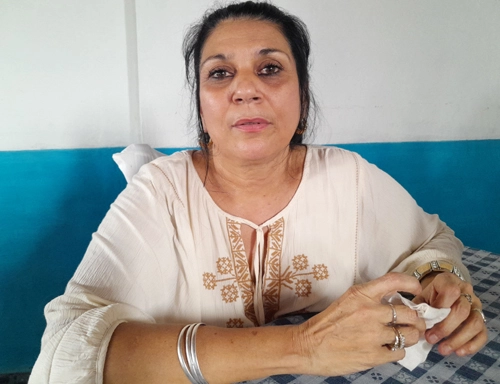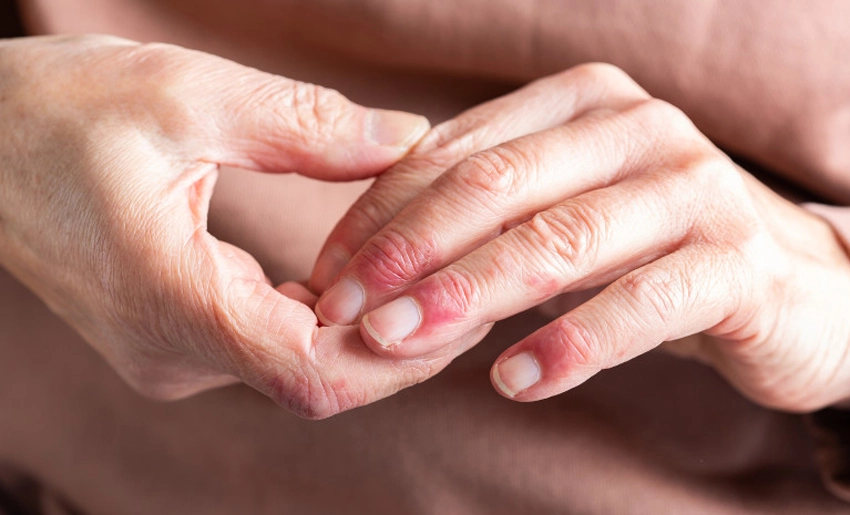Scleroderma or Systemic Sclerosis (SSc), although an autoimmune disease with low prevalence, affects more than a hundred people in the province of Holguin. Precisely because of the same social ignorance surrounding it. Its timely diagnosis often goes unnoticed by other specialties, and patients often arrive late to the Rheumatology service, which jeopardizes their chances of survival.
Susel Remedios Batista, Ph.D., a Rheumatology specialist, has dedicated much of her professional career to researching this disease. Despite the geographical instability of living in the municipality of Banes. She leads the efforts of a team of specialists in this northeastern region to improve the quality of life of those diagnosed with SSc.

How is the prevalence of SSc in Holguin compared to the last decade?
“In this province, five to six cases are diagnosed per year, but after the COVID-19 epidemic, this number has surpassed, and ten to twelve people are diagnosed annually. It’s a disease with a very low prevalence, and studies on the disease in Holguin had never existed before 2011. Since then, based on my line of research, I have been forming a team that contributes to better care for patients with SSc.
“We created a provincial database, and there are rheumatologists trained in the provincial service in each of the provinces. Each specialist has received all the training provided in the various workshops on the disease. The goal of professionals should be to diagnose it increasingly early because when it is diagnosed when all the symptoms and signs described in the literature appear. It is a bit late to adequately treat patients.
Also we are dealing with a disease that generally appears in very young girls, with full physical, mental, and psychological capacity, who need significant social development in matters of school, work, and family. This disease is unfortunately very limiting, disabling, and leads to death. Hence the insistence of those of us who make up the Provincial Chapter of the Cuban Society of Rheumatology to do good work regarding the disease.
“So we are accompanied by many technological advances. Although Holguin doesn’t have the full development we might wish for. There is a highly trained human resource in related specialties related to different organs and systems of diagnosis. For example, in Gastroenterology, Pulmonology, Imaging, and Pathological Anatomy, when we invite them to join our team to diagnose patients early, they take a commendable interest and try to look for the stigmata of the disease in detail. Which is why we are able to diagnose patients earlier. Hence, our group of patients is increasingly beautiful.
“I say this because the disease transforms a person’s physiognomy. Maybe you met that person five years ago, and when you see them again, you’re shocked because their physiognomy, their face, their skin has changed. We work a lot with these patients, with early detection and specific follow-up care for scleroderma patients. We have a provincial clinic for this, and in each municipality, a specialist meets with them who follows the same protocol as the one at the provincial level. We have a team of doctors fully dedicated to researching the disease. We compile information that emerges at the latest international level to develop an increasingly refined, precise, and targeted protocol for scleroderma patients.
Does this mean that scleroderma only affects women?
“The disease was always first described in women, and at this point in the evolutionary process of human civilization, nine to ten women are diagnosed for every man. This means that the disease is increasingly becoming more visible to rheumatologists and other specialists. We add other specialties to our training because patients have symptoms in organs and systems that begin with the skin, but the skin goes through different stages, from mild to moderate and severe.
“It may be that in those early stages, it goes unnoticed by other specialties. However, we keep a clinical eye on it. It doesn’t matter if the patient has hypothyroidism and may have changes, or if the patient is diabetic with skin changes. We focus on determining whether it’s scleroderma or not because scleroderma is fatal. Sometimes the patient doesn’t improve if you diagnose them too late, but if you diagnose them in the early stages, survival rates can be as high as 25 to 27 years.
“There are studies in the country showing, for example, that scleroderma patients in Santiago de Cuba live seven years, while those in Havana and Pinar del Rio can live 10 to 12 years. Therefore, more studies were needed nationwide because other scleroderma patients may be influenced by other environmental factors that may or may not be present in Holguin.
“Here we discovered that in the geographic area of Moa and Frank Pais, where they are exposed to geological mining contamination, the severity of the symptoms and clinical manifestations in the skin and internal organs of these patients are more severe than those in the northern part of the province. We were able to confirm that there are environmental factors that influence the progression of the disease.”
In terms of organs and systems, in order of onset, the skin is affected first, then the digestive system, with the patient experiencing difficulty swallowing and metabolizing food and regurgitation due to the hardening of the digestive tract.
Respiratory symptoms then appear, with the patient experiencing fatigue when walking and exertion, because pulmonary fibrosis has already appeared in the respiratory system, limiting respiratory capacity. Other organs, such as the cardiovascular and renal systems, can then be affected. When the latter is affected, death generally follows, due to the collapse of the vascular area of the kidney and the inability to receive medical treatment. This disease was considered rare, so much so that it was not included in the Rheumatology tree.
“I have come to the conclusion, based on all the studies conducted at the provincial level, that there have always been male patients, but this is what happens because there is no training in the precise diagnosis of the disease.” There have also been other diseases throughout the territory’s evolution that give rise to secondary manifestations of systemic sclerosis. For example hematological and neoplastic diseases, but since they are dependent on a higher-level disease, they are not given the attention they deserve.”
How can the use of Artificial Intelligence be linked to work with SSc?
“We want to raise awareness not only among people in the medical field but also in the technology field because we can create a greater number of software programs that allow us to classify patients by clinical subclassifications and subtypes. We have a team of four computer scientists associated with the Rheumatology research profile who are very good. They know the disease almost as well as we do and help us with our patient databases.”
Do you think that despite efforts to raise awareness of this disease, there is still work to be done?
“Moreover there is still a lot to be done because many specialties have scleroderma patients in their medical offices being treated by Gastroenterology, Pulmonology, and even patients with chronic anemia in Hematology. Where they have not studied the disease as such and lack the ability to diagnose it. Then, over the years, and when they see that the patient is not progressing adequately, they realize it is a different disease.”
However, if they are referred early to Rheumatology, we perform a complete physical examination, apply the artificial intelligence techniques we have at hand, and, above all, clinical acumen, and diagnose early. This requires time and training with other medical specialties.
If this disease often coexists with other diseases, how does the patient’s immune system handle this phenomenon?
“Although the immune system is a perfect machine, if there is any factor that slows or accelerates it, then it results in an autoimmune disease. These can be classified organ-specifically, among other things: a patient with thyroid disease has an immunological disease.
A patient with multiple sclerosis or amyotrophic lateral sclerosis has an autoimmune disease of the immune system, but in Neurology.” However, when these alterations exceed the body’s control, all the altered cells that modify the activity of these organs become a systemic disease, and this is when systemic sclerosis, systemic lupus erythematosus, rheumatoid arthritis, and other very serious diseases begin.
“Follow-up care involves monitoring with immunosuppressants and immunomodulators, where the patient may lose their hair and have adverse reactions to the medication. These patients require the immune system to be brought to practically zero, so that new cellularity can be produced that resembles normal or is better regulated by the medications administered. So that the immunological disorder and severe immune dysregulation that occurs in these diseases do not develop.
“When systemic sclerosis appears in the course of its evolution, any other disease can appear because it is a crossroads between other diseases, as their pathogenesis is similar. “That’s what’s called overlap syndrome, where the parent disease, in this case SSc, overlaps with other autoimmune diseases that may be involved in its development.”
Translated by Aliani Rojas Fernandez
- Chikungunya: Complications Can Lead to Severe Illness - 29 de December de 2025
- Contributions from the Health Sector to Guarantee Water Quality - 26 de December de 2025
- Cuban Health System on Alert Regarding H3N2 Subclade K Influenza - 25 de December de 2025

